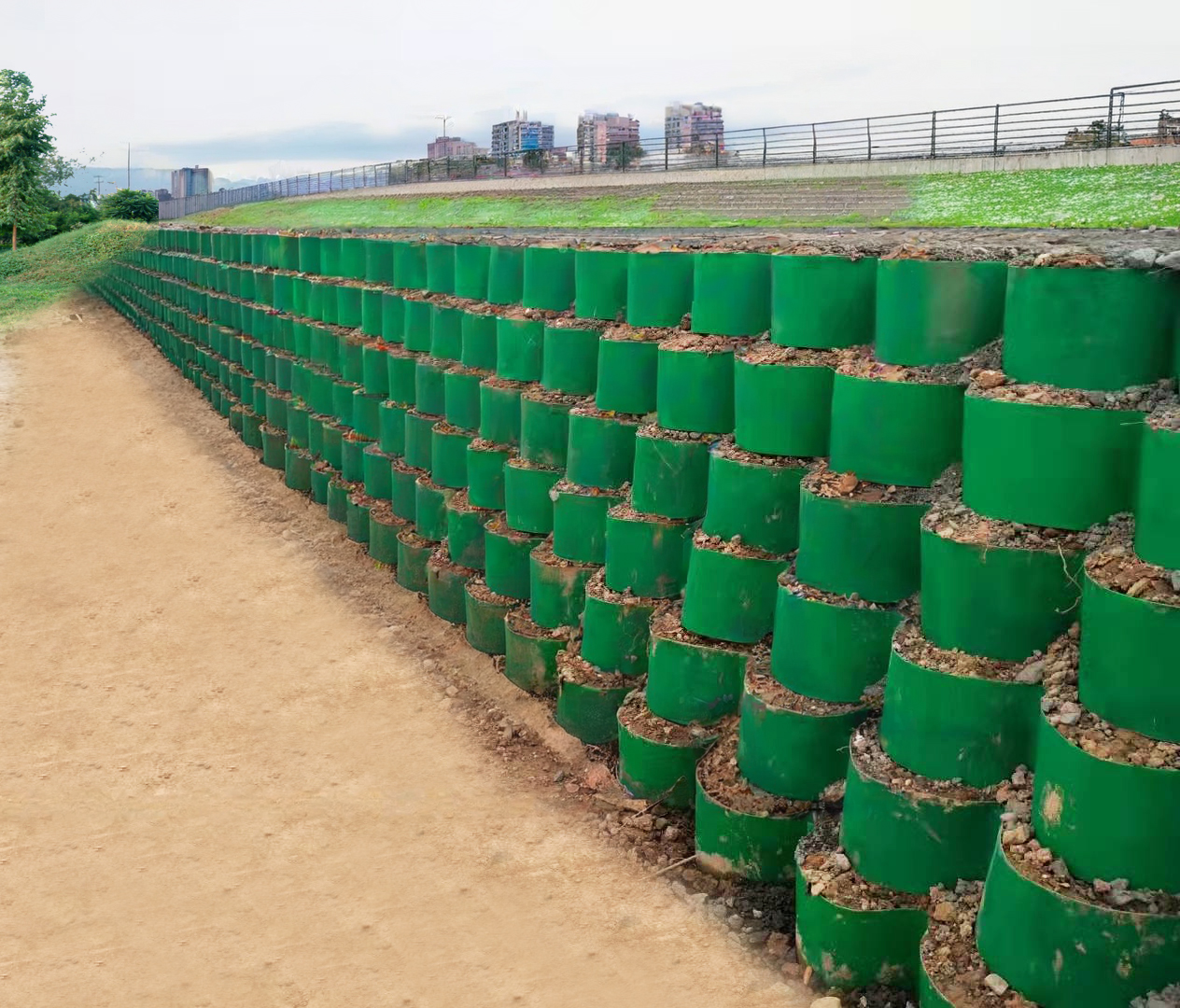墨尔本土工格室在挡土墙中的应用
メルボルンジオセルの擁壁への応用
Application of Melbourne Geocell in Retaining Wall
- Geocell
- Geomembrane
- Uniaxial geogrid
- Biaxial geogrid
- Geotextile
- EVOH Geomembrane
- Warp-knitted geogrid
- Geosynthetic Clay Liner
- Composite Geonet
- Self - adhesive waterproof membrane
- Mining high-strength polyester fiber mesh
- Composite anti-permeability material
- Graebel Fix
- Safety net
- Weed control sheet
- Flexible container bag
- Dimpled Drainage Sheet
- Composite Materials
- Other synthetic materials
- Geomembrane in environmental protection engineering
- Application of geomembrane in water conservancy
- Application of geomembrane in aquaculture
- Application of geomembrane in chemical industry
- Geomembrane in mining engineering
- geocell for retaining walls
- geocell for slope stabilization
- geocell for road construction
- geocell for permafrost
- Geotextiles in slope protection projects
- Project to Strengthen Weak Infrastructure
- Landfill Isolation Project
- Application of geocell in mining area
- Application of HDPE geogrid in retaining wall
- geocell for retaining walls
- geocell for beach erosion
- geocell for landfill
- geocell for drainage
- Application of three-dimensional composite drainage network in landfill
- Application of three-dimensional composite drainage network engineering
- Parking lot new product application
- Top
- Features
Product Detail
Melbourne Geocells is an advanced cellular confinement system (CCS) widely used in civil engineering for soil stabilization, erosion control, and load support. One of its key applications is in the construction of retaining walls, where it provides enhanced structural integrity, prevents soil erosion, and reduces overall construction costs.
Gravity Retaining Walls
• Used where space constraints limit deep excavation.
• Melbourne Geocells improve soil interlocking, allowing for taller and more stable walls.
3.2 Reinforced Retaining Walls
• Melbourne Geocells can be combined with geogrids or geotextiles to enhance load-bearing capacity.
• Ideal for highways, railways, and large infrastructure projects.
3.3 Vegetated Slopes & Green Retaining Walls
• Melbourne Geocells allow for vegetation growth within the wall, providing an aesthetic and eco-friendly solution.
• Reduces the urban heat island effect and enhances biodiversity in urban settings.
4. Case Study: Melbourne Infrastructure Project
A recent project in Melbourne utilized geocells in a retaining wall for a highway expansion project. The key benefits observed were:
• 50% reduction in material costs compared to conventional concrete walls.
• Faster installation, reducing project completion time by 30%.
• Enhanced durability against heavy rainfall and soil erosion.

Features
How Melbourne Geocell Enhances Retaining Wall Performance
Structural Reinforcement
• Geocells create a honeycomb structure that confines soil within each cell, increasing its shear strength and preventing lateral soil movement.
• This reinforcement improves the stability of retaining walls, reducing the risk of wall failure due to soil pressure.
Erosion and Drainage Control
• Perforated geocells facilitate natural drainage, preventing hydrostatic pressure buildup behind the wall.
• Vegetation can be integrated within the geocell system, reducing surface erosion and promoting long-term sustainability.
Cost-Effective Construction
• Compared to traditional retaining walls (e.g., concrete or gabion walls), HDPE geocell-based solutions require less excavation and materials, lowering costs.
• The lightweight nature of Melbourne Geocell simplifies transportation and installation, reducing labor expenses.
Load Distribution and Retention
• The Melbourne HDPE geocell system evenly distributes loads, making it ideal for supporting roads, bridges, and embankments behind the retaining wall.
• Provides superior soil confinement, ensuring long-term durability even under dynamic loads (e.g., traffic, seismic activity).



